Almost everyone heard about algae at school, from which they get the substance used to make marmalade. However, few people know exactly what agar-agar is, how it can be used in cooking. The vegetable analogue of gelatin to the peoples of the East has long been known, but only in recent decades has the product become more popular in Europe.
Material Content:
Agar-agar - what is it, composition
In many Asian countries, gelatin is almost unknown or considered exotic. More than 300 years ago, the population of coastal areas learned how to get agar-agar from brown and red algae. The local name translated into Russian means "jelly".
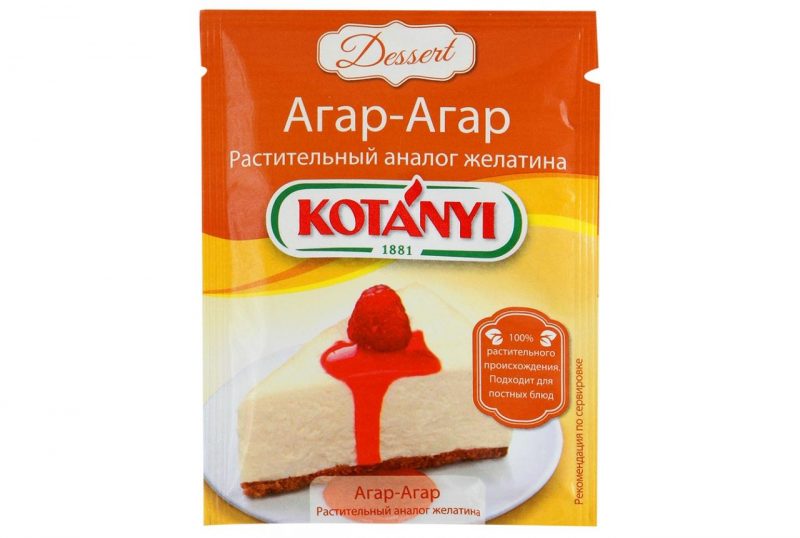
Agar-agar is not an individual substance, but a mixture of polysaccharides of agarose and agaropectin. Also in the composition found a large number of mineral components. Polysaccharides contain, as monomers, simple sugars galactose and pentose, pyruvic acid.
100 g of dry agar powder or cereal contains:
- carbohydrates - 80 g;
- proteins - 6.1 g;
- fiber - 7.7 g;
- potassium - 1120 mg;
- calcium - 620 mg;
- magnesium - 775 mg;
- sodium - 102 mg;
- phosphorus - 52 mg;
- vitamin K - 24 mg;
- Vitamin E - 5 mg.
Due to the composition and arrangement of long molecules, this substance, when dissolved in a hot liquid and subsequent cooling, turns into a dense gel.
The algae from which agar-agar was obtained are found mainly off the coast of East Asia, in the seas of the Pacific Ocean. The product can now be found in stores.Label it as a food supplement, its number is E406.
Description of smell and taste
For use in cooking, the algae extract is dried, then ground. Powder or flakes of the highest grade - white or light yellow. The product of the first grade has a more pronounced yellow color.

The products of individual manufacturers are distinguished by the presence of smell. Some consumers characterize it as “chemical” or “specific”. To others it seems that this is the smell of a sea of algae, iodine. Agar agar has no taste, so it can be used to prepare salty and sweet dishes.
Benefits for the body
The chemical structure of the extract of brown and red algae is similar to fiber in fruits and vegetables. Such substances are used in medicine and diet as prebiotics. In the digestive system of people, they are only partially digested, or do not change at all, but are vital for beneficial microorganisms in the intestinal microflora.
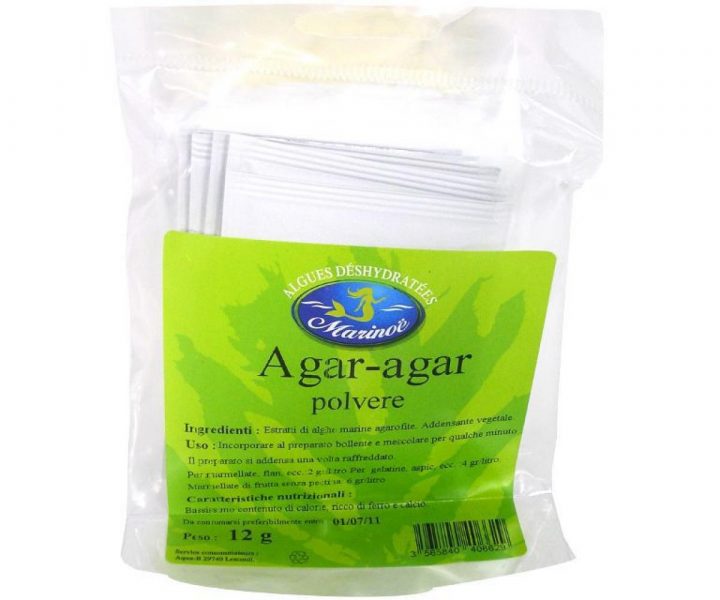
The benefits of agar-agar for the body are low in calories, acting as a prebiotic, stimulating intestinal motility and digestion in general.
In addition, adding sugar to the jam will require less sugar, as the flavor of the fruit is enhanced. Plant fibers bind fluid in the digestive tract and increase in volume. The effect leads to a feeling of satiety, even with a small amount of food consumed. However, increasing the daily amount of agar powder to 4 g has a laxative effect.
In Indonesia, this herbal product is taken for diabetes and heart disease. Agar-based products are believed to lower blood glucose levels, help get rid of cholesterol plaques in blood vessels, and remove toxins and toxins.
All of these effects are associated not so much with polysaccharides of algae, which practically do not break down in the intestine. The therapeutic effect is explained by the use of plant fibers for intestinal microflora. Immunity, the work of the digestive tract and other body systems depend on its condition.
Cooking Application
Agar agar is used as a gelling agent. It is used as a thickener for sauces, puddings, soufflé, jelly, jam, ice cream. Even small amounts of this product cause gelation. This property is manifested when the concentration of the substance is below 1%. The more thickener, the stronger the gel.
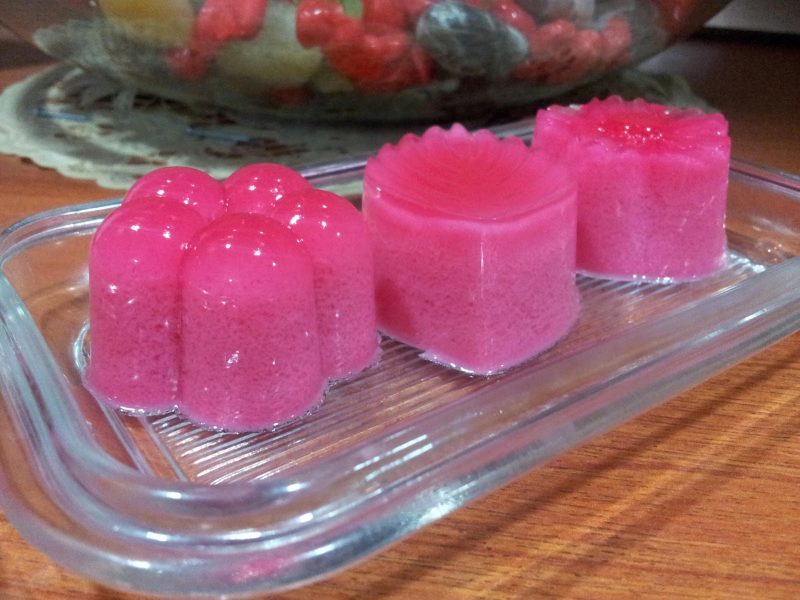
The process is influenced by the individual properties of the products from which a particular dish is prepared (the presence of acid, fat, pectin). The ratio of agar-agar and liquid should be indicated on the package, in the recipe. To turn a glass of liquid into jelly, an average of 1 tsp is required. powder or 1 tbsp. l agar agar flakes.
How to breed agar-agar
To avoid clot formation, completely dissolve the powder, flakes or plates. In each case, there are features, so it is important to know how to use agar-agar in cooking to get a good result.
Plates or flakes
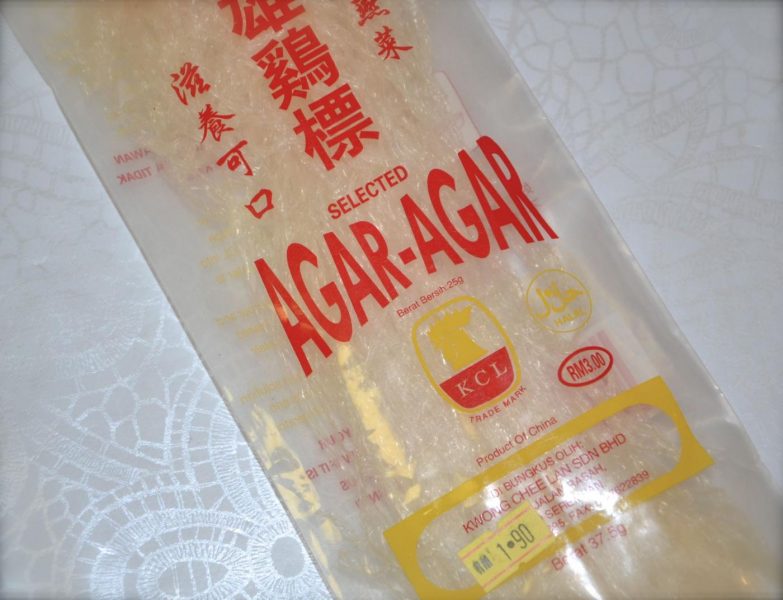
Agar-agar, produced in the form of plates, scales, is poured with water at room temperature. After softening the raw materials, the liquid is heated, constantly stirring. Bring to a boil, monitor the complete dissolution of all the flakes. Then other ingredients indicated in the recipe are added to the liquid. Heating is stopped, the prepared forms are filled with the solution and allowed to cool.
Agar Agar Powder
How to breed agar-agar in powder form? It must be dissolved in cool water or in milk (another product of liquid consistency). After a few minutes, the gelling liquid is heated to a boil. At 100 ° C, the powder completely dissolves. When heated, other ingredients can be added to the liquid. The gel is formed after cooling to approximately 35 ° C.
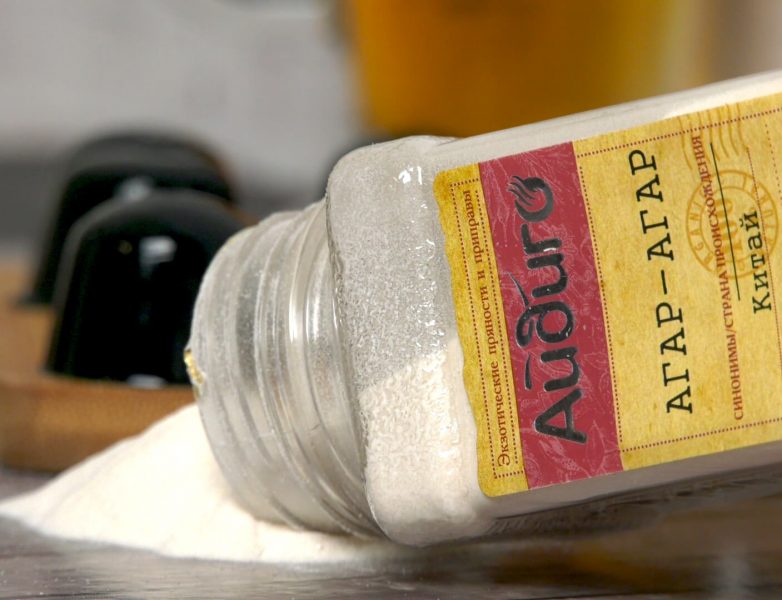
Another method involves mixing all of the ingredients specified in the recipe with agar-agar. Then add water at room temperature. Heat the mixture, bring to a boil. After complete dissolution of the powder is removed from the fire and poured into molds or other containers, left to solidify. Sometimes the powder forms lumps when mixed with hot water, adding oil.
Agar agar and gelatin, what's the difference
Gelatin is obtained from the cartilage and bones of animals. Instead of this extract, a plant product can be used. On average, 1 tsp. agar-agar replaces 8 tsp. gelatin. Two outwardly similar substances differ in many properties.

Agar-agar and gelatin - what's the difference? The first substance in the jelly composition better maintains a firm texture even without a refrigerator. A dish prepared with the use of gelatin quickly “spills out” in the heat. Plant fibers contain a negligible amount of calories, are a vegetarian and dietary product. Every 100 g of gelatin supplies 355 kcal to the body.
Agar agar should be boiled for 2 minutes. If the jelly does not work, then you can re-heat, add more flakes or powder. Most gelatin-based dishes and desserts cannot be fixed after cooking, if necessary. Gelling properties are lost in heat and in the presence of acid. Therefore, gelatin does not boil, do not add too acidic products.
How to replace agar-agar
You can use various thickeners in cooking. For example, 2 tbsp. l corn starch replace 1 tbsp. l agar agar flakes. Another thickener that is suitable for making jelly, jam is apple pectin.
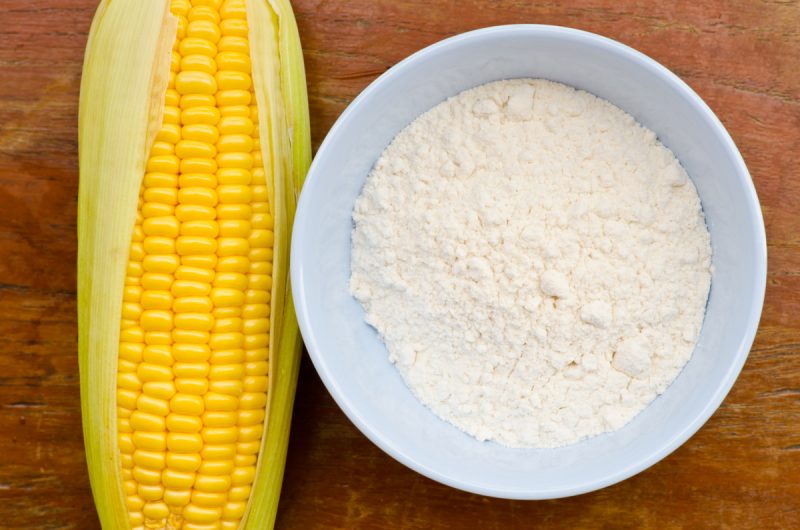
The plant-based equivalent of gelatin contains polysaccharides derived from seaweed. The product has a number of important advantages: stronger than gelatin, healthier as a probiotic product.












